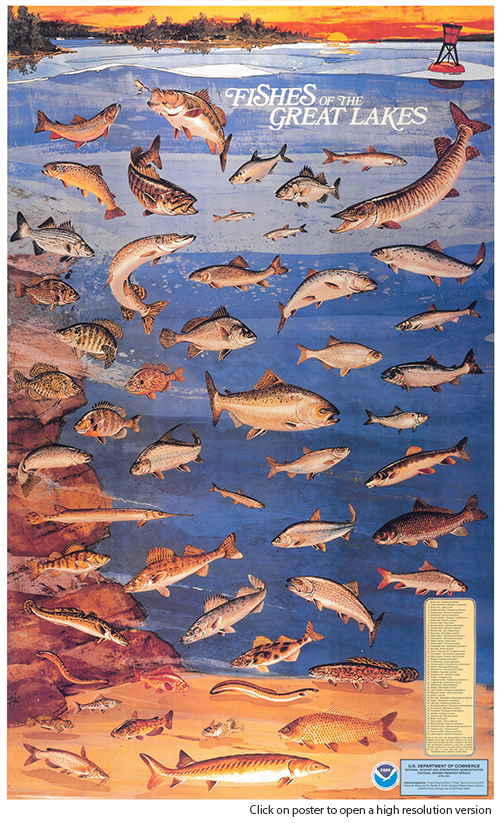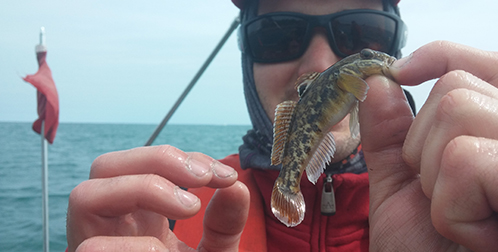The Great Lakes Fishery: A world-class resource!
The Great Lakes were formed about ten thousand years ago when glaciers receded from North America at the end of the last ice age. These vast inland seas contain one-fifth of the world's fresh surface water and are home to 177 species of fish. The Great Lakes fishery is a key feature of the region's history, culture, environment, and economy. Fish make the lakes great!

The Great Lakes Fishery
The Great Lakes commercial, recreational, and tribal fisheries are collectively valued at more than $7 billion annually and support more than 75,000 jobs. Lake whitefish, walleye, yellow perch, and ciscoes are the foundation of the commercial fishery while salmon, walleye, trout, and muskellunge (among many other species) help comprise the world-class recreational fishery. To support the millions of anglers that come to the lakes from around the globe, and to rehabilitate stressed fisheries, agencies stock fish in the Great Lakes each year. A healthy, vibrant Great Lakes fishery is good for the economy and the environment.
Native Fish Species
The Great Lakes support 139 native species. Sculpins, gizzard shad, several species of shiners, and ciscoes sustain top predators including lake trout, walleye, large and smallmouth bass, and brook trout. In addition, some forage species such as ciscoes and yellow perch provide recreational and commercial fishing opportunities.
Non-native Fish Species
At least 34 non-native fish species are present in the Great Lakes. These species have been introduced through multiple vectors including migration around barriers and through canals, intentional introduction by humans (most notably, three species of Pacific salmon), discharge of ballast water from cargo ships, escapement from aquaculture facilities, and release of live bait.

Non-native species that proliferate and cause harm to an ecosystem are called "invasive species". Invasive species often have a widely disruptive effect on native fish populations through competition for food and habitat or predation. The result is often a ripple effect throughout the food web that leads to ecological and economic harm. Sea lampreys, alewives, and quagga mussels are among the worst invasive species in the Great Lakes.
Extirpated and Endangered Species
During the previous two centuries, the fish fauna of the Great Lakes has been altered dramatically due to increasing human populations, the global movement of goods (which has contributed to a rise in the introduction and spread of invasive species), and over-fishing. As a result of these pressures, 18 native species, including several species of ciscoes that historically comprised the bulk of the fish biomass in most of the Great Lakes, have been extirpated from at least one Great Lake. Today, 61 fish species in the Great Lakes are considered to be threatened or endangered.
The Future
_SMALL.jpg)
The Great Lakes fishery is a Canadian and U.S. treasure. It attracts millions of anglers and continues to provide jobs, recreation, subsistence, and food. The fishery is also integral to a healthy Great Lakes environment. The future of the fishery looks bright. Management agencies in both nations, through stewardship and rehabilitation efforts, remain capable and committed to addressing and anticipating the challenges that confront this amazing resource.
Round goby photo, creative commons license

